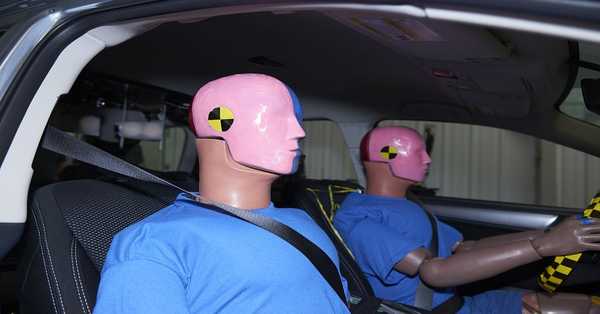The simple act of taking a stroll or riding a bike is becoming an increasingly risky activity
The simple act of taking a stroll or riding a bike is becoming an increasingly risky activity. Some 6,283 pedestrians died on U.S streets and roads in 2018, 42% more than a decade ago, while cyclist deaths rose 38%. Victims were disproportionately Black. (Newer 2019 data shows a small decrease in pedestrian and cyclist fatalities, but an increase in injuries.)
In response, many city transportation officials in the U.S. have taken steps to improve safety for those walking and biking, such as building new protected bike lanes, lowering speed limits and painting road murals. But at the federal level, leaders have largely sat on their hands as the death toll has climbed. That’s a big problem, because it’s the U.S. Department of Transportation (USDOT) — not cities — that regulates the design of automobiles, which are becoming bigger, heavier, and more deadly as American preferences shift from cars and toward pickup trucks and sport utility vehicles. According to USDOT’s own report, “pedestrians are 2-3 times more likely to suffer a fatality when struck by an SUV or pickup truck than when struck by a car.”
That report came out in 2015; since then trucks and SUVs have bulked up further. Physics dictates that heavier vehicles are more likely to hurt or kill upon impact, while taller ones expand frontal blind spots and increase the risk of an individual being pinned and trapped underneath.
Despite the escalating risks to cyclists and pedestrians, USDOT has avoided taking concrete steps to nudge automakers toward safer designs. In November the agency finally released a pedestrian action plan, which included several dozen initiatives, including launching a Pedestrian Safety Month and convening a USDOT summit on the issues at hand. Critics were underwhelmed by its emphasis on education rather than regulation.
You may be more familiar with NCAP than you think — this is the federal program featuring the legendary crash test dummies. Housed within the USDOT’s National Highway Traffic and Safety Administration (NHTSA), NCAP staff deliberately (and carefully) smash new vehicles into various objects in order to estimate the likelihood of injury or death to real people in a collision.
Joan Claybrook, who created the NCAP program in 1979 while serving as NHTSA administrator during the Carter administration, credits an engineer on her team for suggesting the basic structure of the program. “He said, ‘Why don’t you avoid formal regulations and release the crash ratings to the public,’” says Claybrook, who led the agency from 1977 to 1981. “I thought that was a fantastic idea.”
From the outset, NCAP has been a consumer education program intended to help Americans understand the relative safety of new automobiles before making a purchase. Automakers can ignore NCAP if they choose, but federal law requires that its ratings be placed on vehicle window stickers at auto dealerships. (The Insurance Institute for Highway Safety also conducts crash tests to create its own vehicle safety ratings, but only NCAP scores are on those stickers.) Automakers eagerly seek top five-star NCAP ratings, and they boast when they get them.
NCAP was a breakthrough when it launched with the 1983 model year. In particular, Claybrook believes the program pushed automakers to focus on “crumple zones,” which are designed to better protect passengers in a frontal collision, during the 1980s. Inspired by the American model, countries around the world soon launched similar programs. In 2000 NHTSA took a victory lap, declaring in a research paper that “by all indications, the program has worked. More and more consumers have a heightened awareness of vehicle safety and are placing a higher emphasis on it in their buying decisions. This, in turn, has moved the industry to design cars that perform well in NCAP tests.”
